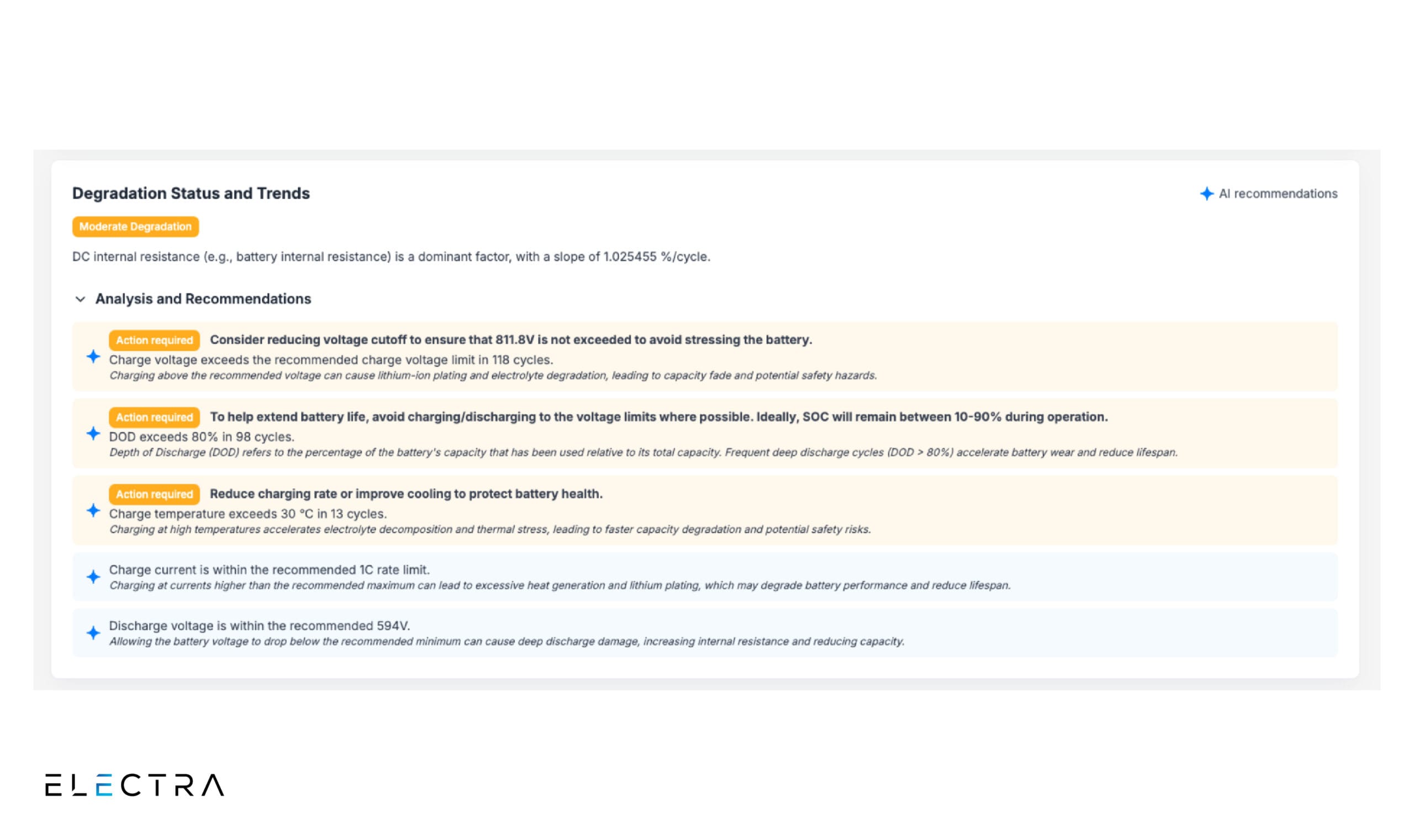Every asset operator has felt it: a strange data signature from a battery rack that doesn’t trigger a standard alarm but just doesn’t look right. A subtle, novel pattern in voltage, temperature, or impedance data that isn’t in any fault library.
This is the diagnostic gap. Do you shut down a multi-million-dollar asset for a ghost hunt, losing days of revenue? Or ignore it and risk a catastrophic failure? That uncertainty is one of the biggest hidden costs and risks in BESS operations today.
Traditional digital twins and monitoring systems are powerful, but they operate from a fixed playbook. Trained on historical data and predefined physics models, they struggle when faced with a truly complex event—an “unknown unknown.”
Closing this gap requires more than a faster calculator. It demands something that can think like a forensic analyst—able to detect patterns, put them in context, and tie them back to scientific truth.
In that moment, you face a choice: assemble an entire team of engineers to sift through data and scenarios…or deploy an AI agent that does it instantly, connecting the dots in real time with the depth of an encyclopedic library.
The Power of Connecting Signals to Scientific Truth
An AI Agent bridges this gap by connecting two different worlds: the raw, quantitative world of sensor data and the qualitative, descriptive world of human scientific knowledge.
The process is direct and powerful:
Isolate the Anomaly – Detects a signal pattern that matches no known fault signature, e.g., a recurring 5-millivolt voltage fluctuation coinciding with a 0.5°C thermal ripple.
Characterize the Signal – Creates a precise digital “fingerprint,” encoding its electrical and thermal characteristics.
Cross-Reference with Scientific Literature – Compares the fingerprint against a curated library of research papers, journals, and technical documentation.
Discover the Root Cause – Goes beyond keyword matching to find contextual meaning. For example, linking the anomaly to a 2024 Journal of Power Sources paper identifying it as an early indicator of anode micro-cracking.
Suddenly, ambiguity is replaced by certainty. An unexplained signal becomes an evidence-backed diagnosis, complete with root cause and progression.
How Diagnostic Certainty Translates to ROI
This ability to move from signal to certainty has a direct and immediate impact on the metrics that matter most.
Eliminate Investigative Downtime Instead of shutting down an entire container for a multi-day ghost hunt, you can perform targeted, proactive maintenance on a specific module. The Agent’s diagnosis turns a panicked investigation into a scheduled, hours-long fix, saving days of lost revenue.
Enable Precision Lifetime Extension Once the exact degradation mechanism is identified, the Agent can recommend precise adjustments to the asset’s control strategy. This isn’t a generic recommendation; it’s a specific prescription to slow a known condition, demonstrably extending the asset’s high-performance lifespan.
Deliver True Performance Intelligence This diagnostic precision allows for a far more accurate evaluation of asset value. You are no longer just tracking ‘capacity fade’; you are tracking the specific financial impact of ‘anode micro-cracking’ on throughput. This gives stakeholders a credible, defensible understanding of the asset’s health and true ROI.
Electra’s AI Agent: From Diagnostic Gap to Decisive Action
This is exactly the gap Electra set out to solve.
Operators don’t need more dashboards filled with numbers—they need clarity, certainty, and actionable intelligence. That’s why we built the Electra AI Agent, an always-on system that acts like a team of PhD engineers embedded in your control room.
Unlike traditional tools that raise alarms without explanations, the AI Agent interprets what a signal means, why it matters, and what to do next. In other words, it transforms raw noise into clear, evidence-backed decisions.
What Sets the Electra AI Agent Apart
PhD-Level Insights in Plain English – Complex anomalies distilled into straightforward recommendations.
Real-Time Alerts and Context – Immediate, contextualized notifications tied to live asset conditions.
Deep Battery Intelligence – Diagnoses anchored in peer-reviewed science, not just historical pattern matching.

From Signal to Certainty
Earlier, we showed how an unexplained 5-millivolt fluctuation could be traced to anode micro-cracking described in a 2024 academic paper. This is exactly where the AI Agent shines: automating that forensic leap. What once required hours of engineering review now happens instantly, inside your fleet analytics.
Suddenly, ambiguity is replaced by certainty. A vague “something looks wrong” becomes:
“This signal matches early-stage anode micro-cracking. Recommended action: adjust charge strategy to mitigate progression.”
With this level of clarity, operators move from reactive firefighting to proactive asset management—protecting uptime, extending battery life, and unlocking true financial intelligence from their fleets.
Ultimately, advanced AI isn’t about replacing human expertise. It’s about augmenting it with a capability never before possible: the power to instantly connect puzzling, real-world signals to their precise scientific explanation—even if buried on page seven of a dense academic paper.
With Electra’s AI Agent, operators finally gain what BESS management has always lacked: certainty.

